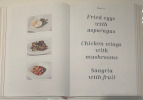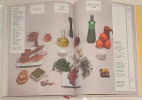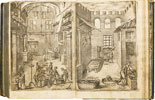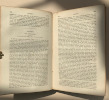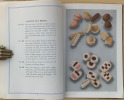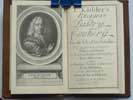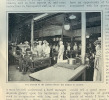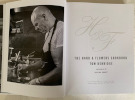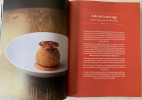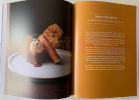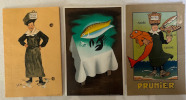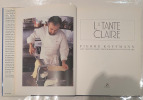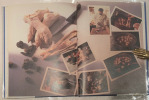Mvrrels Tvvo Books of Cookerie and Carving.
1st TITLE PAGE: (a straight line) The fifth time printed with Additions. (a straight line) LONDON, Printed by M.F. for John Mar-riot, and are to be sold at his Shop in Saint Dunstans Church-yard in Fleet-street. 1638. The text surrounding by a double line border. 2nd TITLE PAGE: THE SECOND BOOKE OF COOKERIE. (a straight line) VVherein is set forth the newest and most commendable Fashion of Dressing, Boyling, Sowcing, or Roast-ing, all manner either Fleash, Fish, or any kinde of Fowle. (a straight line) Together with an exact order of ma-king Kickshawes, or made-dishes, of any fashion, fit to beautifie either Noble-mans or Gentle-mans Table. (a straight line) All set forth according to the new English or French fashion. BY JOHN MURRELL. (a straight line) The fifth Impression. (a straight line) LONDON, Printed for John Marriot, and are to be sold at his Shop in Saint Dun-stans Church-yard. 1638. THE THIRD TITLE PAGE: A NEVV BOOKE OF CARVING AND SEVVING. (a straight line) A small printers device. (a straight line) LONDON. Printed by M.F. for John Marriot, and are to be sold at his Shop in Saint Dunstans Churchyard in Fleetstreet. 1638.
8vo. 1 fep with ink inscription –“Mary Freeman her Book 1715” on front free end-paper, the same, but dated “1733” on verso. 3 Title pages. First title within double rule border. [1] 2nd x 1st title page [1]. 2 pages The Epistle Dedicatorie. 1-82. 2nd Title Page [1]. 85-148. 3rd Title Page [1]. 151-188. 13 pages of Tables [1]. 1 fep. Text in black letter script with woodcuts and typographical head-pieces and ornaments in-text. Front and back covers with no paste-downs. Showing original leather edging. Light age yellowing, margins of title page fractionally dusty, small section torn away from blank lower margin of M4 with loss of signature letter, minuscule wormhole in upper margin, occasional marginal thumb mark. Crisp and clean in contemporary dark brown calf, covers bordered with triple blind rule, ink stain to upper cover, spine ends worn. A very good unsophisticated copy.
- This fifth edition is probably the original second edition with new editions of this hugely important and fascinating cookery book. One of only a handful of surviving copies of any of the early editions, and one of the first cookbooks to establish cookery as a fashion, rather than simply a practical guide to running a kitchen/household. The work is divided into three parts, each with its own title page, the first two on new recipes for cooking, and the third “a New Booke of Carving and Sewing”(The medieval translation for sewing is serving). The prefaces, and its dedications, are to Mrs Martha Hayes in the first book and to Lady Browne in the second. The Author disparages previous cookery books “the most of which nevertheless have instructed rather how to marre than to make good Meate”. Murrell’s work was new, in that it established a new spirit of cookery and promises it is set forth in the English and French Fashion . He openly appeals to “London Cookery” rather than to provincial cookery. Murrell included many recipes he brought back from his experience of the new cuisine emerging in France. Unfortunately, the complete absence of any new French cookery books between 1560 and 1650 leaves a gap in our knowledge of the pre-La Varenne phase of development. In the third part of his book, Murrell also re-published sections of the first printed carving manual in English, “The Boke of Kervyne” of 1513. Though he reclaims carving as a task suitable for wives in aspiring ‘gentle’ households, he groups it with what he declares to be the most current and chic methods of cooking. In some ways Murrell’s use of this older carving manual seems a nostalgic throwback to an older style of hospitality, which he compares both negatively and positively to the new French methods. Despite its disdain for tradition, Murrell’s work includes many of the classics of British and French cooking recognizable today, including such things as rice pudding (though his recipe calls for the inclusion of ‘the smallest guts of a hog’). It also includes recipes using new world produce such as Turkey. Murrell's 'Book of Cookerie' is particularly rare in any edition; Only a handful of copies are known. STC 18303 recording only 3 copies in the UK and Folger and Library of Congress in the US. The first edition is known only by a sub-title at the Bodlein and the New York Public Library copy. No other edition is recorded. Bitting 336. Hull, ‘Chaste, Silent and Obedient.’ pp. 43-4, 187-88. Not in Vicaire, Oberle, or Alden.L1353. Scarce indeed!


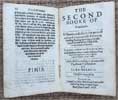
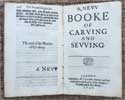

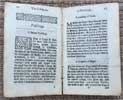
click on image to enlarge

Antiquarian category
ref number:
11236 


